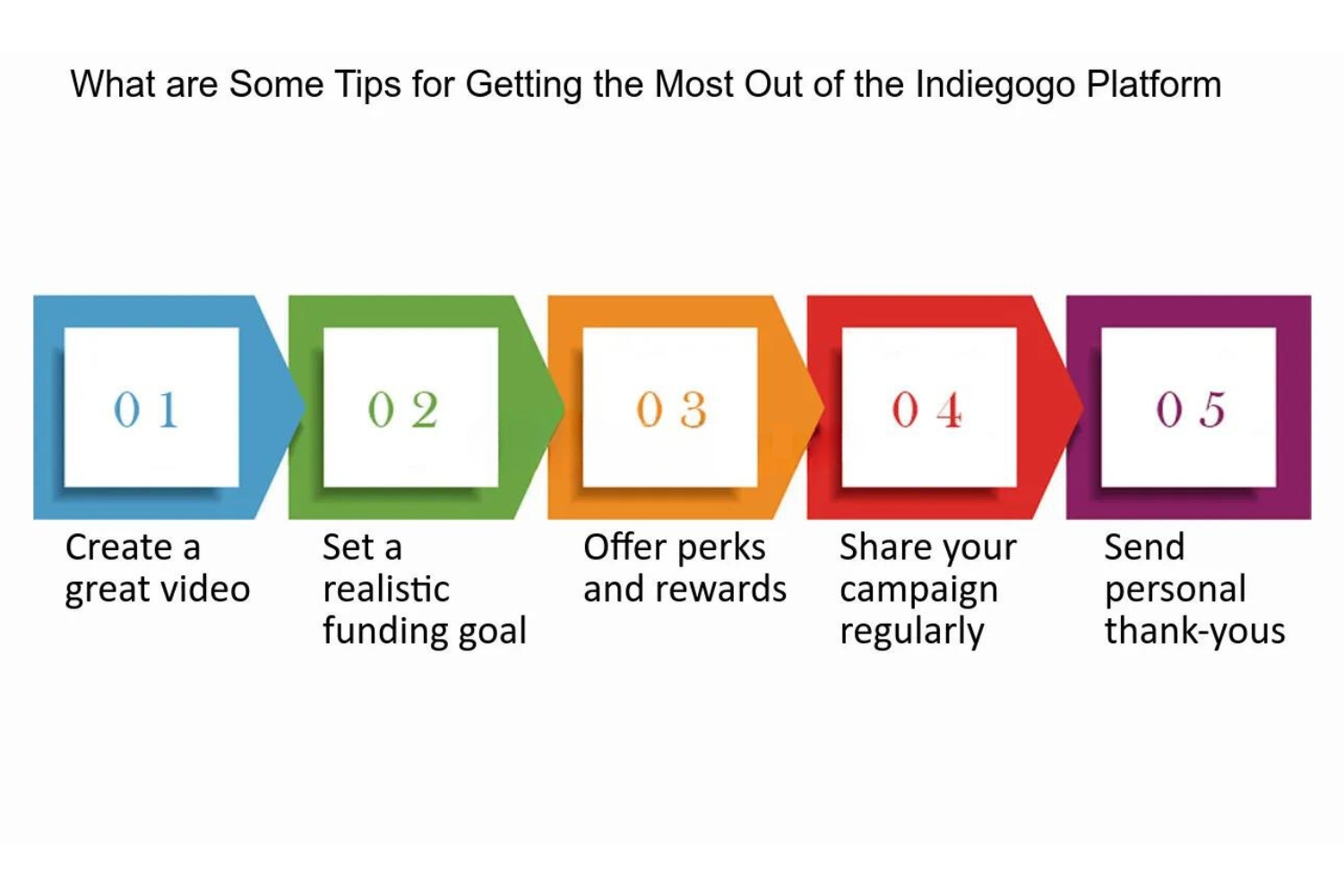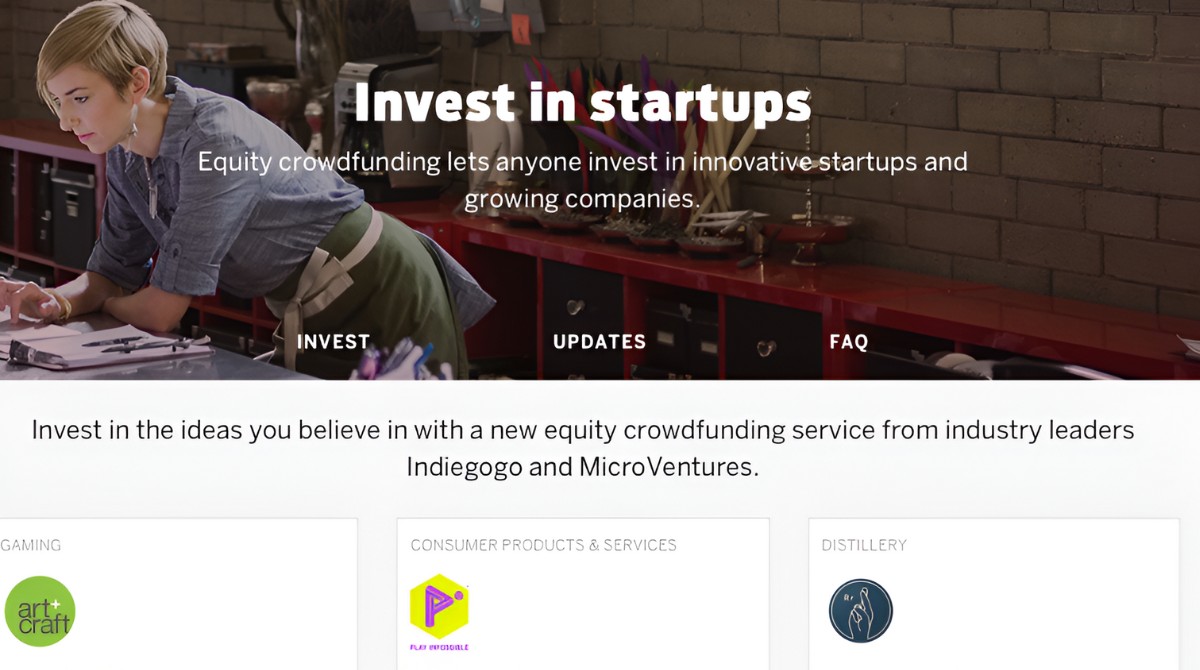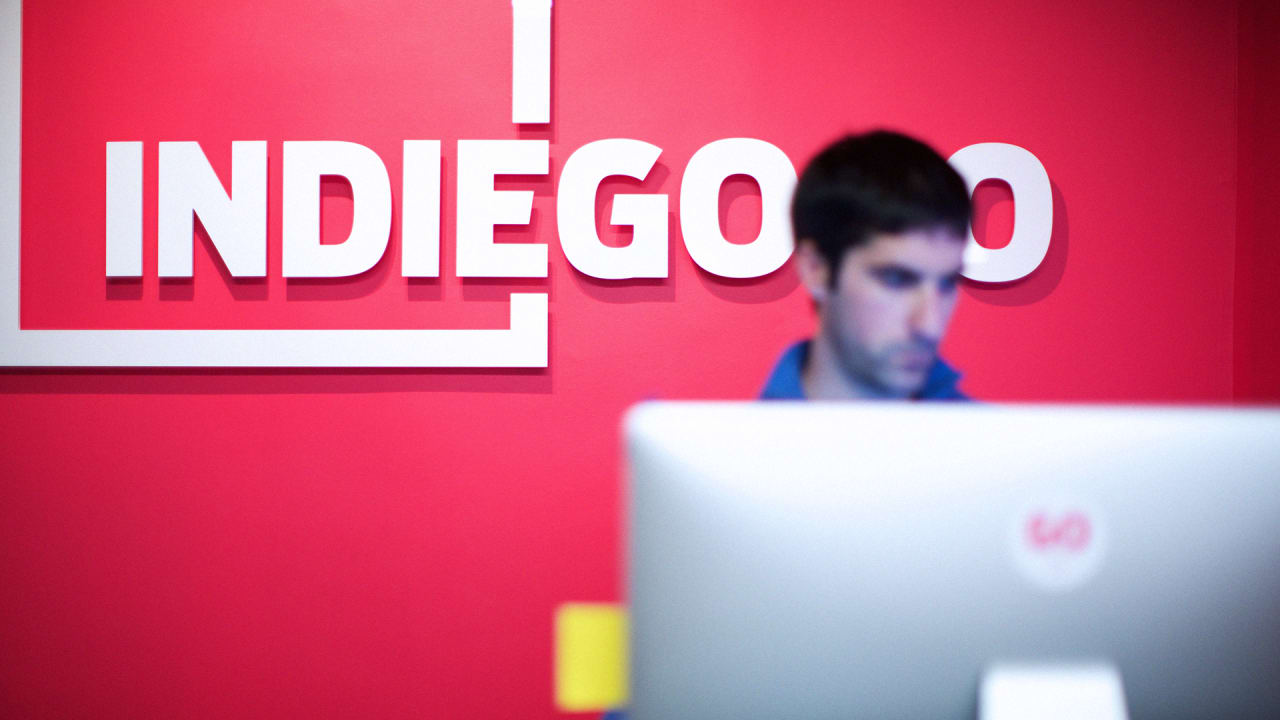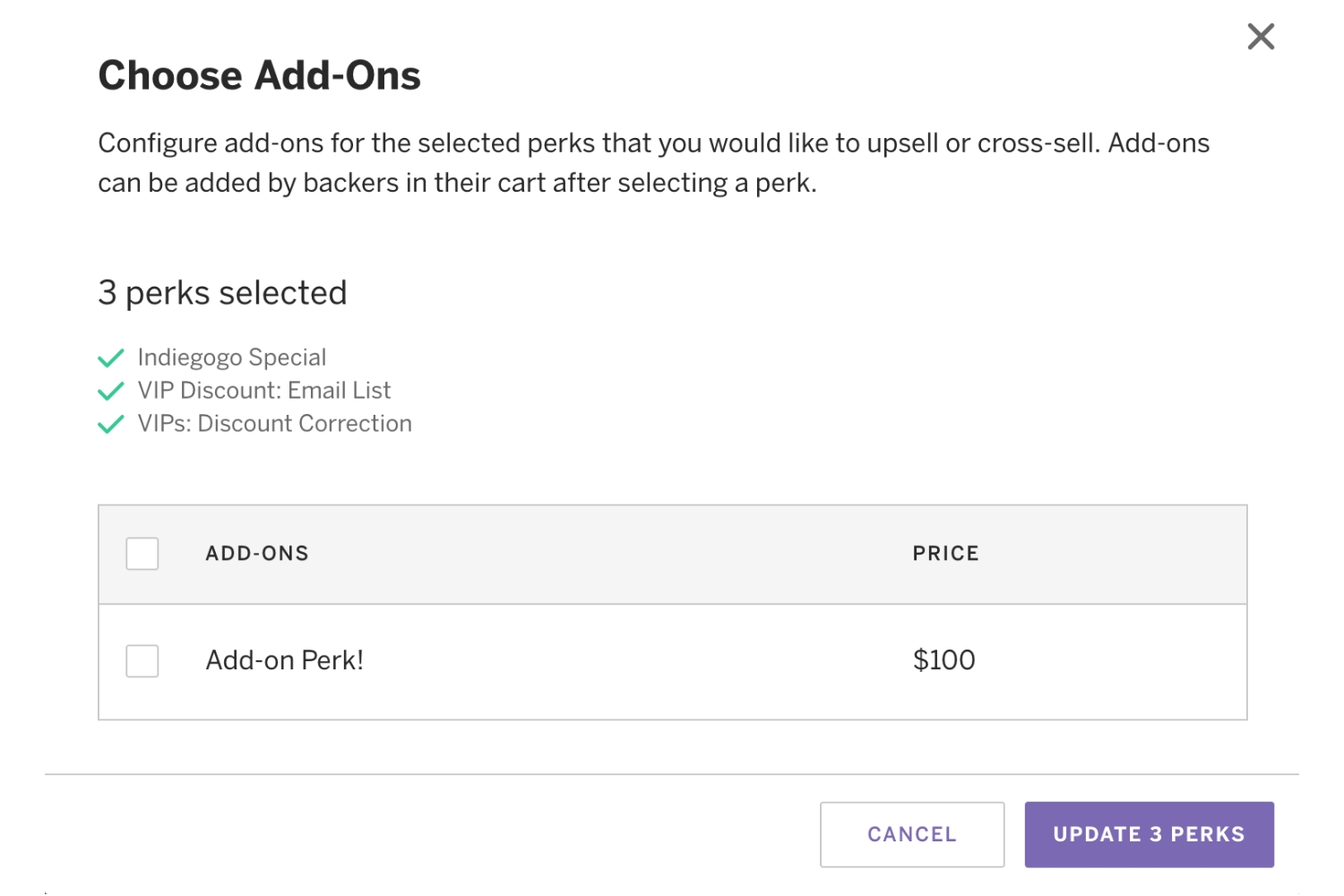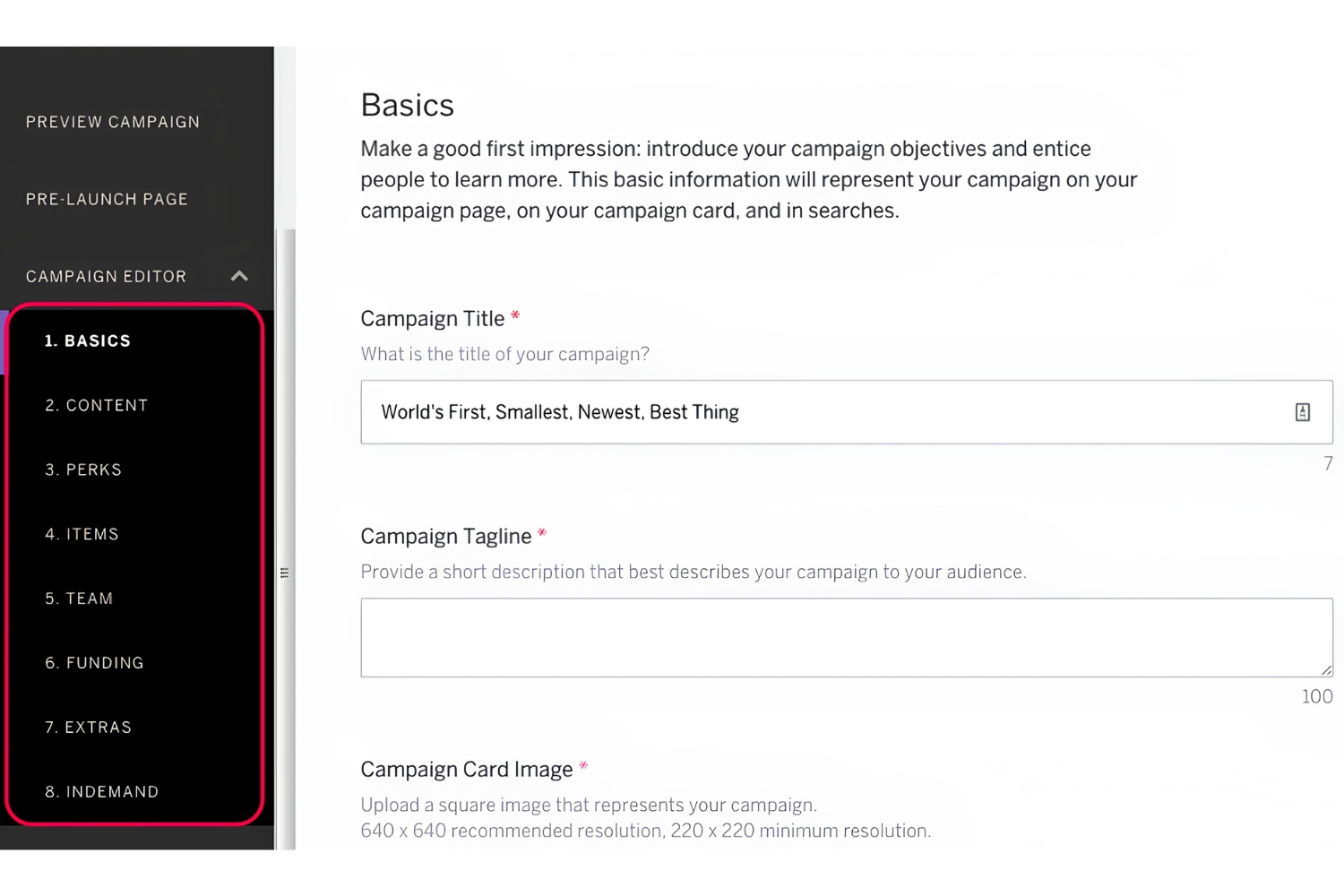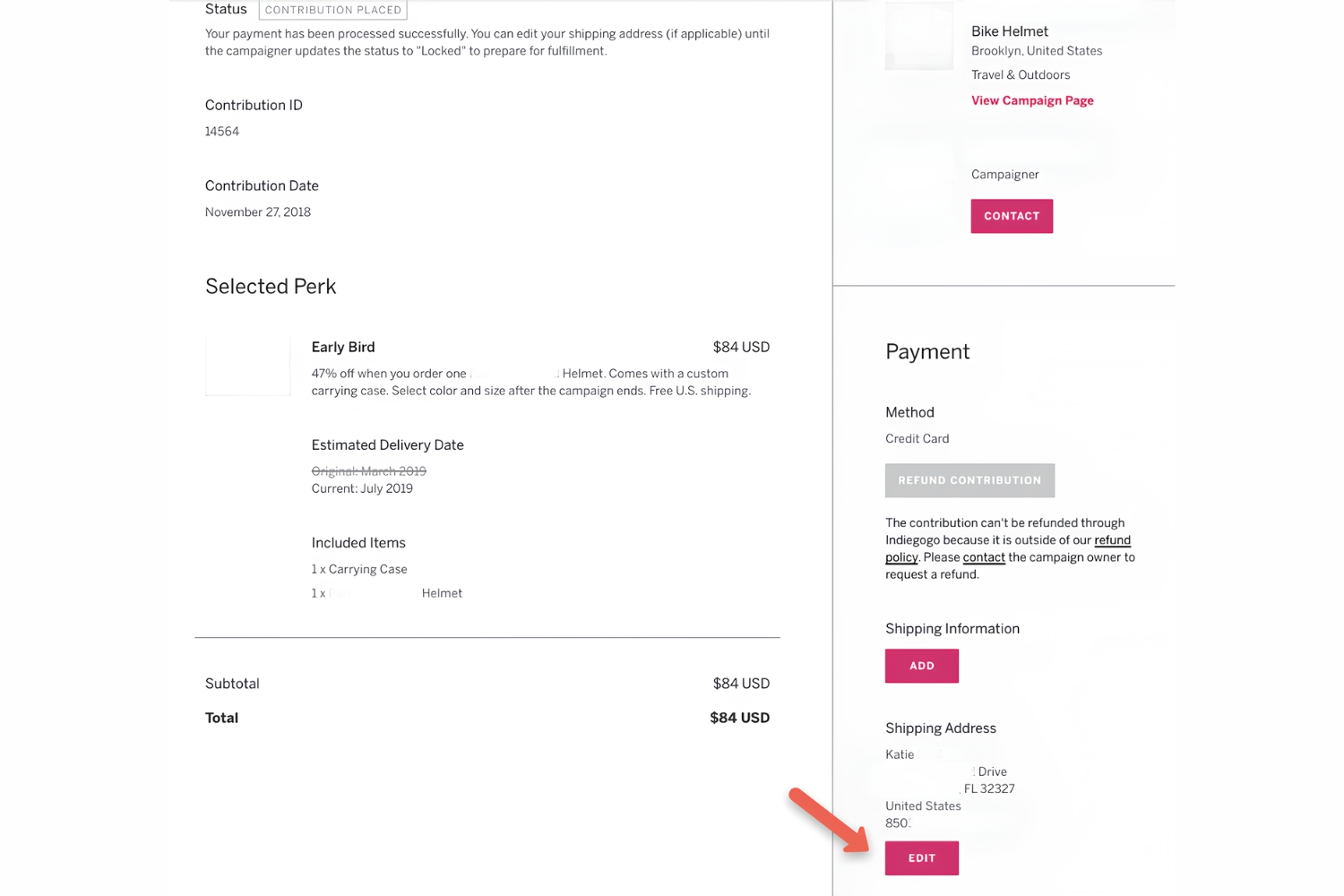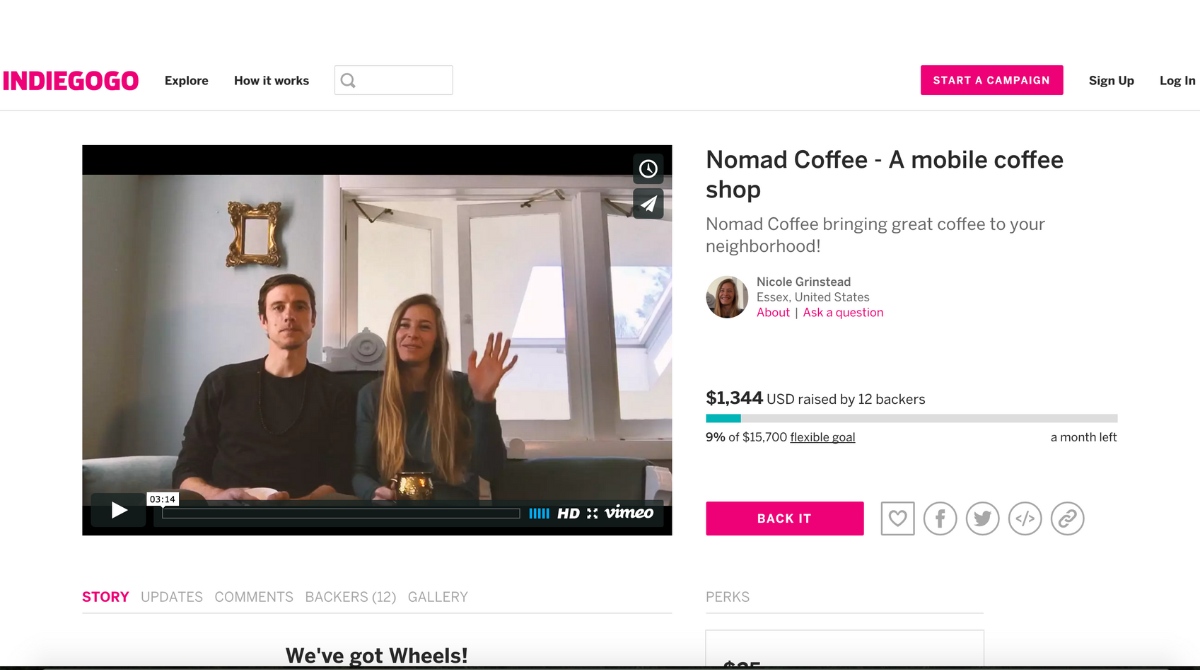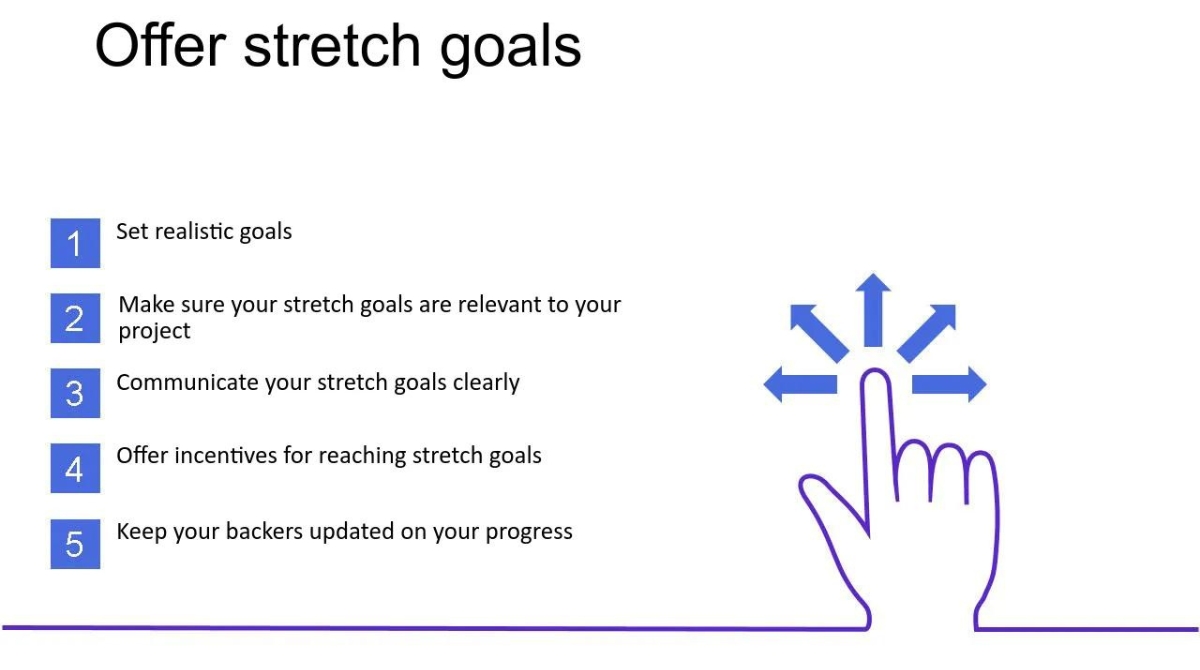Introduction
Welcome to the world of crowdfunding, where dreams become a reality and innovative ideas are brought to life. Indiegogo is a leading platform that empowers creators, entrepreneurs, and visionaries to turn their dreams into tangible projects with the support of a global community. Whether you’re launching a new product, making a film, or funding a social cause, Indiegogo provides a platform to showcase your ideas, connect with potential backers, and raise the funds needed to make your project a success.
With thousands of campaigns launched on Indiegogo every day, it’s essential to understand the key strategies and best practices to maximize your chances of success. In this guide, we will walk you through the process of creating a compelling Indiegogo campaign, setting realistic goals, designing attractive rewards, optimizing your campaign page, and executing effective marketing strategies, among other essential aspects. By implementing these strategies, you can position yourself for success and unlock the full potential of Indiegogo.
However, it’s important to note that crowdfunding success doesn’t come overnight. It requires careful planning, dedication, and engagement with your community of backers. This guide will provide you with the knowledge and tools you need to navigate the crowdfunding journey successfully.
Whether you’re a first-time creator or an experienced entrepreneur, this guide is designed to equip you with the insights and strategies that will help you get the most out of your Indiegogo campaign. So, let’s dive in and discover how you can turn your ideas into reality and make an impact with Indiegogo.
Understanding Indiegogo
Indiegogo is a global crowdfunding platform that provides individuals and businesses with the opportunity to raise funds for their projects or causes. Founded in 2008, Indiegogo has revolutionized the way people bring their ideas to life by connecting them with a diverse and supportive community of backers from around the world.
One of the key features of Indiegogo is its flexible funding model. Unlike some other crowdfunding platforms, Indiegogo allows creators to choose between two funding options: Fixed Funding and Flexible Funding. With Fixed Funding, the campaign must reach its funding goal within a specified time frame, or no funds are collected. On the other hand, with Flexible Funding, creators can keep the funds raised even if the campaign falls short of the initial goal.
Indiegogo also offers a range of tools and resources to help creators optimize their campaigns. From customizable campaign pages to analytics dashboard and social media integrations, Indiegogo provides a comprehensive set of features to enhance the visibility and success of your campaign.
Moreover, Indiegogo offers a variety of campaign categories, including technology, film, art, music, health, and more. This allows creators from different backgrounds and industries to find the right niche for their projects and connect with an audience that shares their passion and interests.
When launching a campaign on Indiegogo, it’s important to have a clear understanding of your project’s goals and target audience. This will allow you to craft a compelling campaign story and effectively communicate the value and impact of your project to potential backers.
Additionally, Indiegogo offers various resources and educational materials to help creators navigate the crowdfunding process. These include webinars, guides, and a community forum where creators can learn from others’ experiences and seek advice from experts.
By truly grasping the concept and potential of Indiegogo, you can leverage the platform’s features and resources to create a successful crowdfunding campaign. Understanding the intricacies of Indiegogo will empower you to make informed decisions and maximize your chances of obtaining the necessary funding to bring your vision to life.
Creating a Compelling Campaign
Creating a compelling campaign is crucial to attract and engage potential backers on Indiegogo. To stand out among the sea of campaigns, you need to articulate your project’s value, inspire excitement, and make a lasting impact. Here are some key elements to consider when creating your campaign:
1. Tell a Captivating Story: Start your campaign with a compelling story that connects with your audience on an emotional level. Highlight the problem your project solves or the impact it can make. Use storytelling techniques, vivid imagery, and relatable anecdotes to create a strong narrative that resonates with your potential backers.
2. Showcase Your Unique Proposition: Clearly communicate what sets your project apart from others. Highlight the unique features, benefits, or innovation that make your project special. Convey a sense of excitement and exclusivity to compel potential backers to support your campaign.
3. Create Engaging Visuals: Humans are visual beings, so make sure to include high-quality images, videos, and graphics. Show prototypes, concept art, or behind-the-scenes footage to give potential backers a glimpse into your project. Visuals can help convey your project’s potential and make it more enticing to supporters.
4. Offer Compelling Rewards: Design a range of enticing rewards for different contribution levels. Offering exclusive perks, limited edition items, or early access can motivate backers to support your campaign. Ensure that the rewards are relevant to your project and provide genuine value to the backers.
5. Build Trust and Credibility: Establishing trust with your potential backers is crucial. Share your background, expertise, and any previous accomplishments that showcase your ability to deliver on your promises. Testimonials from satisfied customers or experts in your field can also help build credibility and inspire confidence.
6. Create a Sense of Urgency: Set a limited-time campaign duration and use countdowns or progress bars to create a sense of urgency. Encourage potential backers to act fast and not miss out on the opportunity to support your project. Limited-time offers or early bird discounts can also add a sense of urgency and drive immediate action.
Remember that a compelling campaign is not simply a sales pitch. It’s an invitation to be a part of something meaningful and exciting. Craft a strong and authentic campaign that conveys your passion, showcases your project’s potential, and inspires backers to join you on your journey.
Planning Your Campaign Timeline
A well-planned campaign timeline is essential for a successful Indiegogo campaign. It helps you stay organized, sets clear goals and deadlines, and ensures that you have enough time to build momentum and engage with your audience. Here are some key steps to consider when planning your campaign timeline:
1. Pre-Launch Preparation: Before launching your campaign, allocate time for pre-launch preparation. This includes building your campaign page, creating engaging visuals and videos, and crafting compelling campaign copy. Additionally, plan your marketing strategy, including social media promotion, influencer outreach, and email marketing, to build anticipation and gather initial support for your campaign.
2. Campaign Duration: Choose an appropriate duration for your campaign. While the maximum campaign duration on Indiegogo is 60 days, it’s advisable to keep it shorter, typically between 30 to 45 days. A shorter campaign duration keeps the momentum high and creates a sense of urgency for potential backers to contribute.
3. Milestone Planning: Break down your campaign timeline into milestones to keep a clear focus and sense of progression. Milestones can include reaching a certain funding goal, unlocking stretch goals, or hitting specific backer counts. Celebrate and engage with your community when these milestones are achieved to maintain enthusiasm and momentum throughout your campaign.
4. Updates and Engagement: Plan regular campaign updates to keep your backers informed about the progress of your project. Updates can include sharing behind-the-scenes footage, introducing new rewards, or announcing project developments. Engage with your backers by responding to comments, addressing concerns, and involving them in the decision-making process whenever possible.
5. Post-Campaign Activities: Allocate time after your campaign ends to complete any remaining tasks, such as collecting backer information, finalizing reward details, and confirming delivery logistics. This is also an opportunity to thank your backers and provide updates on the project’s progress. Maintain transparency and keep your backers informed about any potential delays or changes in the project timeline.
Remember to be flexible with your timeline as unexpected challenges or opportunities may arise during your campaign. Regularly evaluate your progress and adjust your strategy if necessary. A well-planned campaign timeline ensures that you stay organized and maintain momentum throughout the entire crowdfunding process, from pre-launch to post-campaign activities.
Setting a Realistic Funding Goal
Setting a realistic funding goal is a crucial step in the success of your Indiegogo campaign. Your funding goal determines how much money you aim to raise and directly impacts the perception and feasibility of your project. Here are some key factors to consider when determining your funding goal:
1. Budget and Project Scope: Evaluate your project’s budget and scope to determine how much funding you truly need. Consider all the expenses involved, such as production costs, materials, marketing, shipping, and any other overhead expenses. It’s essential to have a clear understanding of the financial requirements of your project to set an accurate funding goal.
2. Research and Comparable Projects: Conduct thorough research on similar projects in your industry or category. Look at successful campaigns to understand their funding goals and how they were able to achieve them. Analyze the average funding amounts and backer counts to ensure your goal is within a realistic range. Remember, it’s essential to set a goal that is ambitious, yet attainable.
3. Backer Expectations and Perceived Value: Consider how potential backers might perceive your funding goal in relation to the rewards you are offering. Ensure that the value provided by the rewards aligns with the amount you are asking for. Backers need to feel that their contribution is worthwhile and that they are receiving fair and desirable rewards in return.
4. Stretch Goals: Stretch goals are additional funding milestones you can set beyond your initial funding goal. They allow you to offer additional features, enhancements, or expansions to your project. Consider incorporating stretch goals into your campaign strategy to incentivize backers to contribute more and unlock additional benefits.
5. Campaign Duration: Keep in mind that the longer your campaign duration, the higher your funding goal should be. A longer campaign requires more funds to sustain ongoing marketing efforts and maintain momentum. Conversely, shorter campaigns can have lower funding goals as they create a sense of urgency and may generate larger contributions during a shorter time frame.
6. Self-Funding and External Funding: Assess whether you have any self-funding or external funding sources that can contribute to your project. Having some funds already secured or additional financial backing can significantly impact the funding goal you set on Indiegogo. It’s important to be transparent about any additional funding sources in your campaign updates and communicate how those funds will be used.
Remember, setting a realistic funding goal is essential not only for the success of your campaign but also for maintaining the trust and credibility of your backers. A realistic funding goal shows that you have carefully planned and calculated the financial requirements for your project. By considering these factors, you can set a funding goal that aligns with your project’s needs and increases your chances of reaching and exceeding your funding goal on Indiegogo.
Designing Attention-Grabbing Rewards
One of the key factors that can attract potential backers to your Indiegogo campaign is the rewards you offer. Well-designed and enticing rewards can motivate people to support your project and make a contribution. Here are some tips for designing attention-grabbing rewards:
1. Offer a Variety of Options: Create a range of reward tiers to cater to different budget levels. Include rewards at various price points to appeal to a wider audience. This allows supporters with different financial capacities to contribute and feel a sense of value for their investment.
2. Make Them Exclusive and Limited: Create a sense of scarcity and exclusivity by offering limited edition or early bird rewards. Limited quantities or time-limited availability can instill a sense of urgency and compel potential backers to act quickly to secure the desired rewards.
3. Align Rewards with Your Project: Ensure that the rewards you offer are relevant and connected to your project. The rewards should provide a tangible connection to the project’s purpose or offer a unique experience related to the project. This strengthens the value proposition for potential backers and enhances the overall appeal of your campaign.
4. Personalize Rewards: Consider offering personalized or customized rewards that create a personal connection with your backers. This can include signed copies, personalized messages, or customized versions of your product or service. Personalization adds a special touch that makes the rewards feel more exclusive and meaningful.
5. Include Social Impact: Consider incorporating rewards that have a social impact or give back to a cause. For example, you could offer a reward where a portion of the proceeds goes towards a charity or provide an option for backers to donate additional funds to a specific cause. This adds an extra layer of purpose and appeal to your campaign.
6. Communicate Value Clearly: Clearly communicate the value and benefits of each reward. Provide detailed descriptions, images, and specifications to showcase what backers will receive. Highlight any unique or standout features of the rewards to capture attention and make them stand out from the crowd.
7. Consider Add-Ons and Stretch Goals: Offer additional add-on options that backers can purchase alongside their chosen reward. This allows them to customize and enhance their overall experience. Also, incorporate stretch goals that unlock additional rewards or upgrades when certain funding milestones are achieved.
Remember, the rewards you offer should not only incentivize contributions but also reflect the value and excitement of your project. By designing attention-grabbing rewards, you can motivate potential backers to support your campaign, increase your pledge amounts, and create a sense of enthusiasm that drives the success of your Indiegogo campaign.
Optimizing Your Campaign Page
Your campaign page is the face of your Indiegogo campaign. Optimizing it is crucial to capture the attention of potential backers and convince them to support your project. Here are some key strategies to optimize your campaign page:
1. Create a Compelling Headline and Description: Craft a captivating headline that grabs attention and clearly conveys the essence of your project. Follow it with a concise and compelling description that highlights the key features, benefits, and impact of your project. Keep the language concise, engaging, and easy to understand.
2. Highlight Stunning Visuals: Use high-quality images and videos that showcase your project. Including visually appealing content helps potential backers envision the end product and builds trust. Visuals can include product images, prototypes, concept art, and videos demonstrating your project’s functionality or telling your story.
3. Showcase Testimonials and Press Mentions: If you have received positive feedback or been featured in the press, include testimonials or quotes from satisfied customers, influencers, or reputable media outlets. This adds credibility to your project and reassures potential backers about its quality and potential.
4. Utilize Clear and Concise Sections: Divide your campaign page into logical sections to make it easier for visitors to navigate. Clearly label sections such as “About,” “Rewards,” “Team,” “FAQs,” and “Updates.” Each section should have a clear purpose and provide relevant information to engage and inform potential backers.
5. Communicate the Project Timeline: Outline the timeline and milestones of your project. Provide a clear breakdown of the different phases and estimated delivery dates for rewards. Being transparent about your timeline builds trust and helps backers understand when they can expect to receive their contributions.
6. Include Social Proof and Backer Count: Display the number of backers who have already supported your campaign. Showing social proof and demonstrating that others have already shown their trust and support can encourage more people to join in. Consider integrating social media widgets on your campaign page to showcase the number of shares and reactions your campaign has received.
7. Create a Strong Call-to-Action (CTA): Clearly place a prominent and compelling CTA button that directs visitors to contribute or share your campaign. Use phrases like “Support Now,” “Back This Project,” or “Contribute” to guide potential backers towards taking action. Make the CTA button visually appealing and make sure it stands out on your page.
8. Optimize for Mobile: With the increasing use of mobile devices, it’s crucial to ensure your campaign page is mobile-friendly. Test your page on different screen sizes to ensure that it is easy to navigate and visually appealing, regardless of the device used.
By optimizing your campaign page, you can capture the attention of potential backers and increase the likelihood of them supporting your project. Remember to regularly update your campaign page with new information, milestones, and engaging visuals to maintain interest and engage with your backers. A well-optimized campaign page can make a significant difference in the success of your Indiegogo campaign.
Utilizing Effective Marketing Strategies
To achieve crowdfunding success on Indiegogo, you need to employ effective marketing strategies to reach a wider audience and attract potential backers. Here are some key marketing strategies to consider:
1. Build a Strong Online Presence: Establish a strong online presence through social media platforms, a dedicated project website, and a well-crafted email marketing strategy. Engage with your target audience through regular content updates, behind-the-scenes glimpses, and interactive discussions.
2. Leverage Social Media: Utilize various social media platforms to raise awareness about your campaign. Create compelling posts and share engaging content related to your project. Leverage hashtags, influencer collaborations, and social media ads to expand your reach and attract new supporters.
3. Tap into Existing Networks: Reach out to your personal and professional networks to spread the word about your campaign. Encourage them to share your campaign with their networks. Word-of-mouth still remains a powerful marketing tool and can lead to increased visibility and support.
4. Guest Blogging and Media Outreach: Seek opportunities for guest blogging or securing media coverage related to your project. Pitch your story and project to relevant industry blogs, magazines, and news outlets. This can help generate additional exposure and credibility for your campaign.
5. Engage with Influencers: Collaborate with influencers or experts in your industry who have a significant following and a genuine interest in your project. They can help promote your campaign to their audience and provide valuable endorsements and testimonials.
6. Run Targeted Ads: Consider running targeted online advertisements on platforms like Facebook, Instagram, or Google to reach your desired audience. Use compelling visuals, engaging copy, and targeting options to optimize your ad campaign and drive traffic to your Indiegogo page.
7. Participate in Relevant Communities: Engage with communities and forums related to your project’s niche. Contribute valuable insights, answer questions, and establish yourself as a knowledgeable authority. Ensure your participation is genuine and not solely focused on promoting your campaign.
8. Create Engaging Content: Invest in creating compelling and shareable content related to your project. This can include videos, blog posts, infographics, or case studies. Engaging content not only attracts potential backers but also helps build brand awareness and credibility.
Remember, an effective marketing strategy involves a combination of approaches tailored to your project and target audience. Continuously evaluate and adjust your strategy based on the campaign’s performance and feedback from your audience. With strategic marketing efforts, you can increase the visibility of your campaign, attract more backers, and ultimately achieve your funding goals on Indiegogo.
Engaging With Your Backers
Engaging with your backers is one of the most vital aspects of running a successful Indiegogo campaign. Building a strong relationship and maintaining open communication with your backers can not only increase their satisfaction and support but also help generate positive word-of-mouth and loyalty. Here are some key strategies for effectively engaging with your backers:
1. Regular Updates: Provide regular updates on the progress of your project to keep your backers informed and engaged. This can include sharing milestones achieved, production updates, or behind-the-scenes glimpses. Updates show transparency and let your backers feel involved in the journey.
2. Timely Responses: Respond to backer comments, questions, and concerns in a timely manner. Be proactive in addressing any issues or inquiries. Demonstrating responsiveness builds trust and shows your commitment to delivering a positive experience to your backers.
3. Personalization: Where possible, personalize your communications with your backers. Use their names in messages or express gratitude for their support individually. Personalization adds a human touch and makes your backers feel valued and appreciated.
4. Social Media Engagement: Actively engage with your community on social media. Respond to comments, share backer-generated content, and encourage discussions related to your project. Social media platforms provide an opportunity for real-time interaction and help foster a sense of community around your campaign.
5. Backer Surveys and Feedback: Create surveys to gather valuable feedback from your backers. Their insights can help you improve your project and identify any areas that need attention. Make your backers feel heard and valued by incorporating their suggestions or ideas whenever possible.
6. Offer Backer Exclusives: Create exclusive perks or updates specifically for your backers. Providing special content or benefits that are only accessible to backers fosters a sense of exclusivity and makes them feel part of an exclusive community supporting your project.
7. Thank You Notes and Appreciation: Show your gratitude by sending personalized thank-you notes or acknowledgments to your backers. Express your appreciation for their support and highlight the impact they are making by helping bring your project to life. A small gesture of gratitude can go a long way in building strong and lasting relationships.
8. Involve Backers in Decision-Making: Whenever appropriate, involve your backers in decisions related to your project. This can include voting on certain design elements, selecting color options, or providing feedback on prototypes. Involving your backers not only makes them feel valued but also fosters a sense of ownership and investment in your project’s success.
Remember, engaging with your backers goes beyond the duration of your campaign. It extends to the post-campaign phase as well, where you should continue to update and involve your backers until the project is successfully fulfilled. By actively engaging with your backers, you can cultivate a loyal and supportive community while creating a positive crowdfunding experience for everyone involved.
Managing Your Campaign Finances
Effectively managing your campaign finances is crucial for the success of your Indiegogo campaign. Proper financial management ensures that you stay on track with your budget, fulfill your commitments, and maximize the impact of the funds raised. Here are some key considerations for managing your campaign finances:
1. Create a Detailed Budget: Develop a comprehensive budget that outlines all the expenses associated with your project. Factor in production costs, marketing and advertising expenses, shipping and fulfillment charges, fees, and any miscellaneous expenditures. A well-planned budget helps you understand the financial requirements of your campaign and guides your spending decisions.
2. Track Your Expenses: Keep a record of all your campaign-related expenses. Use accounting software or spreadsheets to track every transaction, from the funds raised on Indiegogo to every expense incurred. Regularly review your financial records to ensure you are staying within your budget and to identify any potential areas of overspending.
3. Set Realistic Stretch Goals: When setting stretch goals, ensure that they are realistic and aligned with your budget. Consider the additional costs involved in delivering on these goals, such as manufacturing upgrades or additional rewards. Make sure that any stretch goals you introduce are financially feasible without jeopardizing the fulfillment of the initial campaign promises.
4. Account for Fees and Taxes: Factor in the fees charged by Indiegogo, payment processors, and any applicable taxes when planning your budget. Understand the financial implications of these fees and taxes on the funds you will receive. It’s essential to account for these expenses to ensure that your actual available funds align with your expectations.
5. Monitor and Adjust Spending: Continuously monitor your spending and adjust your budget as needed. Prioritize essential expenses and make strategic decisions to optimize the use of your funds. Regularly reviewing your finances allows you to identify areas where you can cut costs or allocate additional funds to achieve your project goals.
6. Prepare for Contingencies: Account for unexpected expenses or contingencies that may arise during your campaign. It’s wise to have a reserve fund to cover any unforeseen costs or production delays. Planning for contingencies minimizes the risk of financial setbacks and helps you maintain the trust and confidence of your backers.
7. Communicate Transparently: Be open and transparent with your backers regarding the allocation of funds and any financial challenges you may face. Provide regular updates on your campaign’s financial status, ensuring transparency with your backers inspires trust and confidence in the way you manage your finances.
8. Collaborate with Professionals: If needed, seek assistance from professionals such as accountants or financial advisors. They can provide guidance on financial matters, help with tax compliance, and ensure that your campaign finances are managed effectively.
Managing your campaign finances effectively is crucial for maintaining accountability and fulfilling your commitments to your backers. By carefully planning your budget, tracking expenses, and making strategic financial decisions, you can optimize the use of the funds raised and maximize the impact of your Indiegogo campaign.
Fulfilling Rewards and Delivering on Promises
Fulfilling rewards and delivering on promises is a critical aspect of running a successful Indiegogo campaign. Meeting or exceeding your backers’ expectations is essential for maintaining their trust and satisfaction. Here are key considerations to ensure smooth reward fulfillment:
1. Organize Reward Logistics: Set up a system to manage the logistics of fulfilling rewards efficiently. This includes organizing inventory, packaging materials, and shipping labels. Streamline the process to ensure that rewards are delivered accurately and on time.
2. Provide Regular Updates: Keep your backers informed about the progress of reward fulfillment through regular updates. Communicate any delays or hurdles transparently, providing realistic timelines and explanations. Open and proactive communication helps manage expectations and build trust.
3. Quality Control: Maintain high standards for the quality of your rewards. Thoroughly inspect each item to ensure it meets the promised specifications. If there are any defects or issues with the rewards, address them promptly and provide suitable solutions to impacted backers.
4. Address Backer Inquiries: Respond to backer inquiries and concerns regarding reward fulfillment in a timely and courteous manner. Provide clear and comprehensive answers to their questions, and offer support to address any issues they may encounter. Open and attentive communication helps foster positive relationships with your backers.
5. Package Rewards Securely: Package rewards securely to protect them during shipping. Use appropriate packaging materials to safeguard against damage during transit. Consider including personalized notes or branded elements to add a personal touch and enhance the overall unboxing experience for backers.
6. Consider International Shipping: If you have international backers, familiarize yourself with international shipping regulations and provide clear information about any potential customs fees or duties. Offer options for expedited shipping or tracking to ensure timely and secure delivery for international backers.
7. Track and Confirm Delivery: Implement a system to track and confirm delivery of rewards. Consider using delivery confirmation or tracking services to provide both you and your backers with visibility into the shipment progress. This helps ensure that rewards reach their intended recipients and minimizes the risk of lost or undelivered items.
8. Express Gratitude: Show your gratitude to your backers for their support and patience during the reward fulfillment process. Consider including a thank-you note or a small token of appreciation along with the rewards. Expressing your thanks reinforces the value you place on your backers’ contributions.
By prioritizing reward fulfillment and delivering on your promises, you demonstrate your commitment to your backers and the integrity of your campaign. Effective reward fulfillment not only ensures the satisfaction of your backers but also helps build a positive reputation that can lead to future support and endorsements.
Post-Campaign Strategies and Next Steps
Completing your Indiegogo campaign successfully is just the beginning of your entrepreneurial journey. It is essential to implement post-campaign strategies and plan your next steps to continue building on your accomplishments. Here are some key strategies and considerations:
1. Thank Your Backers: Express your gratitude to your backers and supporters immediately after the campaign ends. Send personalized thank-you messages, update your campaign page with a final thank-you note, and publicly acknowledge the invaluable role of your backers on your social media platforms. Showing appreciation strengthens your relationship with your backers and fosters continued support.
2. Provide Regular Updates: Although your campaign has ended, keep your backers informed about the progress of your project through regular updates. Share milestones reached, showcase production updates, and provide exciting news related to your project. Regular updates help maintain engagement, transparency, and a sense of shared progress with your backers.
3. Fulfill Rewards Promptly: Prioritize timely reward fulfillment as it is a crucial aspect of post-campaign activities. Ensure that you have a system in place to manage inventory, packaging, and shipping logistics efficiently. Communicate with your backers regularly about the status of their rewards and provide updates on the fulfillment process until every backer has received their reward.
4. Engage in Customer Service: Continue providing excellent customer service even after the campaign ends. Be responsive to inquiries, address concerns promptly, and provide ongoing support to your backers. Positive post-campaign customer service experiences contribute to customer satisfaction and can lead to positive reviews and referrals.
5. Prioritize Community Building: Nurture the community that has supported you throughout your campaign. Continue engaging with your backers through social media, newsletters, and exclusive content. Encourage ongoing conversations, ask for feedback, and involve them in the next steps of your project. Building a strong and loyal community around your project can lead to ongoing support and word-of-mouth promotion.
6. Explore Retail Opportunities: If applicable, consider exploring retail opportunities and partnerships to expand the reach of your product. Research potential retailers or distributors who align with your target audience and reach out to discuss potential collaboration. Getting your product into physical stores or online marketplaces can expose your project to a wider audience.
7. Plan for Future Funding: Evaluate your long-term funding needs beyond the initial campaign. Consider alternative funding options like grants, angel investors, or venture capital if necessary. Use the momentum and success of your Indiegogo campaign to secure additional funding and propel your project to the next level.
8. Continue Marketing and Promotion: Maintain an ongoing marketing strategy to keep your project visible and attract new supporters. Leverage social media, content marketing, and public relations to create buzz around your project. Regularly communicate exciting updates, partnerships, or future plans to keep your backers and potential customers engaged.
Post-campaign strategies are crucial for maintaining momentum, cultivating ongoing relationships with backers, and laying the foundation for the continued success of your project. By implementing these strategies and planning for the future, you can leverage the success of your Indiegogo campaign and propel your project towards its long-term goals.
Conclusion
Congratulations on completing this guide to getting the most out of your Indiegogo campaign! Throughout this journey, we have explored the key steps and strategies to create a compelling campaign, engage with your backers, and successfully manage your Indiegogo project from start to finish.
Launching a campaign on Indiegogo is an exciting endeavor that requires careful planning, effective marketing, and strong engagement with your supporters. By understanding the platform and implementing the strategies we’ve discussed, you can maximize your chances of reaching your funding goal and bringing your project to life.
Remember that success on Indiegogo goes beyond the funds raised. It is about building a passionate community, delivering on promises, and cultivating ongoing relationships with your backers. The support and trust of your backers are invaluable resources that can elevate your project to new heights.
As you embark on your Indiegogo journey, adaptability and continuous learning are key. Stay responsive to feedback, monitor your campaign’s progress, and adjust your strategies as needed. Embrace the challenges and celebrate the accomplishments, knowing that each step brings you closer to your ultimate goals.
Indiegogo provides a platform for dreamers and creators to turn their ideas into reality, and with the right approach, you can make a significant impact. So, take what you’ve learned here, approach your campaign with confidence, and remember to infuse your unique personality into every aspect of your campaign.
Now it’s time to put your knowledge into action and forge ahead on your Indiegogo journey. Good luck, and may your campaign be filled with success, support, and the realization of your dreams!







